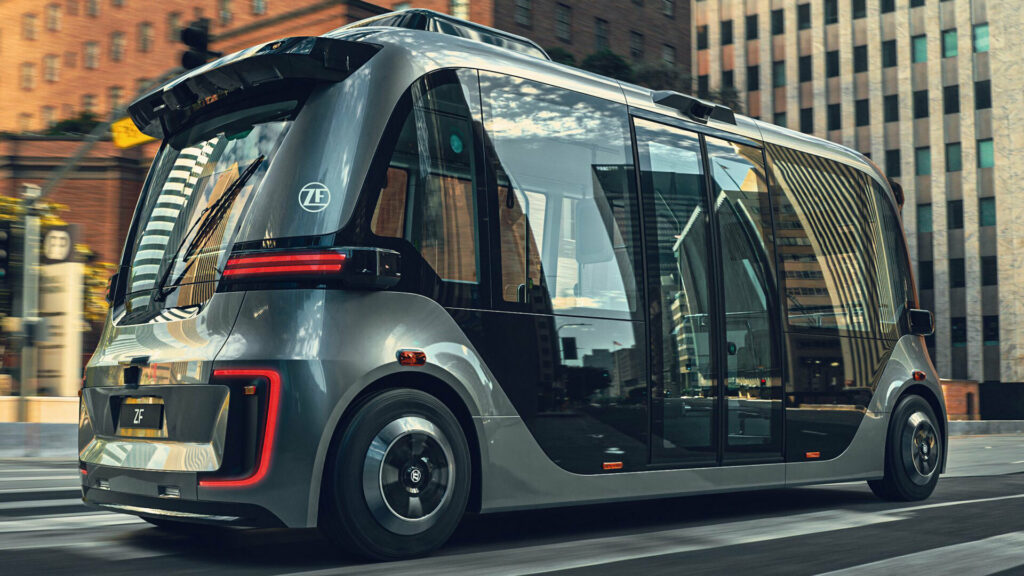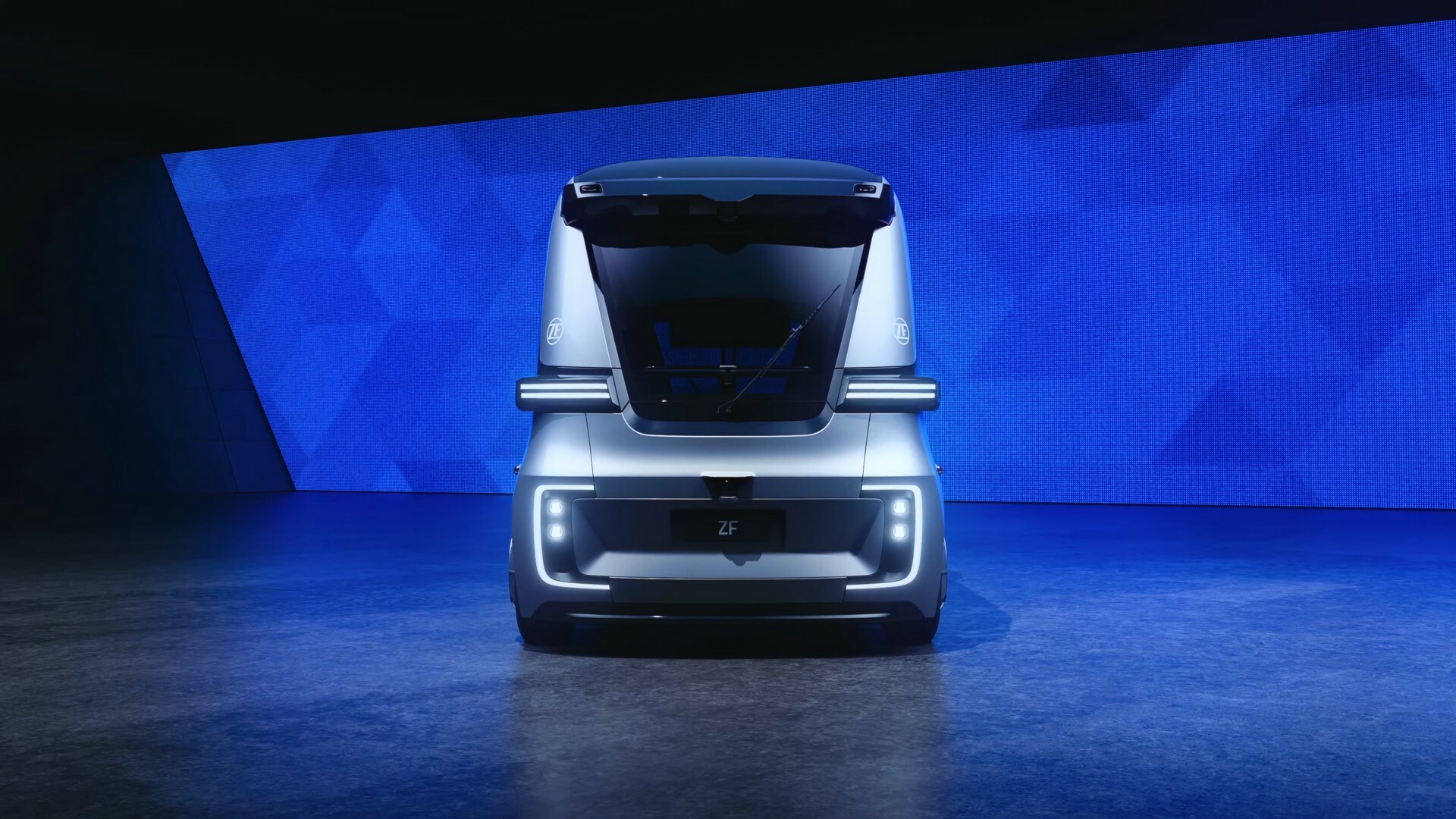ZF is best known for making transmissions, but they’ve used CES to unveil an autonomous shuttle.
Simply called Next Generation Shuttle, the model features Level 4 autonomous driving technology which relies on lidar, radar, camera, and audio sensors to give the model a detailed view of its surroundings. ZF’s autonomous driving software, known as Virtual Driver, then processes all of that information to enable the vehicle to drive itself in urban environments. The company also noted there are multiple redundancies to ensure “full functionality” as well as high reliability.
Putting the software and sensors aside, ZF said the shuttle will have selectable battery capacities between 50 and 100 kWh, and this will enable the model to travel up to 80 miles (129 km) on a single charge. The vehicle will have a top speed of 25 mph (40 km/h), but the company is looking to double that to 50 mph (80 km/h) in the future.
Also: ZF CEO Says Robotaxis Won’t Become The Norm Before 2030
Speaking of performance, the shuttle features front and rear steering as well as a kneeling function. This promises to enable the model to “dock precisely and provide barrier-free boarding and disembarking.”
On the styling front, there isn’t much to report as the model looks like a fairly traditional shuttle. That being said, it features a streamlined design with LED lighting units and expansive side glass. We can also see numerous sensors and sliding doors.
ZF only provided a few glimpses of the cabin, but the model can accommodate up to 22 passengers, although only 15 will find seats. We can also see a classy color scheme as well as a faux wood floor and a handful of displays showing information about upcoming stops. ZF added that the interior is customizable and “conforms to requirements of the Americans with Disabilities Act” as it includes an automatic ramp and wheelchair restraints.
Besides introducing the shuttle, ZF announced a strategic partnership with mobility services provider Beep. The agreement calls for several thousand shuttles to be delivered to customers in the coming years. If everything goes according to plan, public transport operators will be able to offer passengers autonomous, emission-free rides 24/7 without having to hire drivers.












